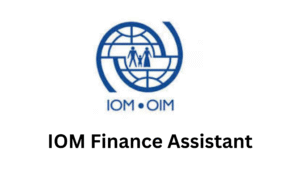
Table of Contents
Introduction to Effective Strategies for Implementing Mindfulness in the Workplace
This article is mostly for employers, helping them see the importance of implementing mindfulness in their employees. In the fast-paced work environment of today, it is common for employees to feel overwhelmed by the constant demands of deadlines, meetings, and the pressure to perform. This often results in heightened stress levels, which can negatively impact both productivity and overall well-being. However, incorporating mindfulness practices into the workplace can have a significant positive impact, reducing stress, improving focus, and enhancing overall well-being.
In this article, we will explore seven effective strategies for implementing mindfulness practices in the workplace, which can help foster a culture of well-being and productivity. By following these strategies, employers can create a supportive and healthy work environment that promotes employee engagement, job satisfaction, and overall success.
7 Effective Strategies for Implementing Mindfulness in the Workplace
- Introduce Mindfulness Training Programs: Start by offering mindfulness training programs to employees to introduce them to the concept and practice of mindfulness. These programs can include workshops, seminars, or online courses led by experienced mindfulness instructors. Through guided meditation sessions, breathing exercises, and stress-reduction techniques, employees can learn how to incorporate mindfulness into their daily routines.
- Create Dedicated Mindfulness Spaces: Designate specific areas within the workplace where employees can engage in mindfulness practices uninterrupted. These mindfulness spaces can be equipped with comfortable seating, soft lighting, and soothing decor to create a calm and tranquil environment conducive to relaxation and reflection. Encourage employees to take regular breaks throughout the day to visit these spaces and recharge their minds.
- Incorporate Mindfulness into Meetings: Integrate mindfulness practices into team meetings and brainstorming sessions to promote focus, creativity, and collaboration. Start meetings with a brief mindfulness exercise, such as a mindful breathing or body scan exercise, to centre participants and cultivate present-moment awareness. Encourage active listening and mindful communication during discussions to foster a culture of respect and empathy.
- Offer Mindfulness Apps and Resources: Provide employees with access to mindfulness apps and resources that they can use to cultivate mindfulness both in and out of the workplace. Popular mindfulness apps offer a variety of guided meditation sessions, mindfulness exercises, and relaxation techniques that employees can access conveniently on their smartphones or tablets. Encourage employees to explore these resources and incorporate them into their daily routine.
- Lead by Example: Cultivate a culture of mindfulness from the top down by demonstrating mindfulness practices as a leader or manager. Incorporate mindfulness into your daily routine and openly share your experiences and insights with your team. Lead mindfulness sessions or meditation breaks to show your commitment to employee well-being and encourage participation from others.
- Promote Work-Life Balance: Recognize the importance of work-life balance in supporting employee well-being and productivity. Encourage employees to set boundaries between work and personal life and prioritize self-care activities outside of work hours. Offer flexible work arrangements, such as telecommuting or flexible hours, to accommodate individual needs and promote a healthy work-life balance.
- Foster a Supportive and Inclusive Environment: Create a supportive and inclusive work environment where employees feel valued, respected, and empowered to prioritize their well-being. Encourage open communication, feedback, and dialogue around mental health and well-being to reduce stigma and promote awareness. Offer employee assistance programs (EAPs) and mental health resources to support employees facing challenges or seeking additional support.
Conclusion
Considering our world today, it’s more important than ever for organizations to prioritize employee well-being and mental health. By implementing mindfulness in the workplace, organizations can create a positive and fulfilling work environment where employees can thrive. This includes fostering a culture of mindfulness, encouraging regular breaks and self-care, promoting work-life balance, and providing mental health resources and support. By reducing stress and promoting overall productivity, organizations can ensure that their employees are happy, healthy, and motivated to contribute to the success of the company.
For more information and knowledge on implementing mindfulness, you can read this article from Havard Business School.
Candidates also apply to:
💬 Get Paid in Dollars Just by Chatting With Lonely People
Imagine earning daily dollar income from anywhere in the world — no degree, no experience, no interviews — just your phone or laptop.
People are getting paid simply to chat, listen, and keep others company online. This short ebook reveals:
- ✔ Legit platforms that pay in USD
- ✔ How Africans can register & withdraw successfully
- ✔ What to say to keep conversations paid
- ✔ How beginners start with zero experience
Instant download • Works worldwide • Beginner-friendly
The 2024 MILEAD Fellows Program for Young African Women Leaders
Grant Opportunity: Apply Now for the British Institute BIEA Bringing Research Home Grant 2024/2025!
University of Manitoba Scholarships 2024: Study in Canada Funded!
Germany SBW Berlin Scholarships for International Students In 2024
🔥 Want to Make Money Online the Right Way?
Discover how smart people are quietly earning with AI, Email Marketing, CPA, LinkedIn, Online Teaching & Content Creation.
This is not theory — it’s a step-by-step system.
👉 Get the Ebook Now










